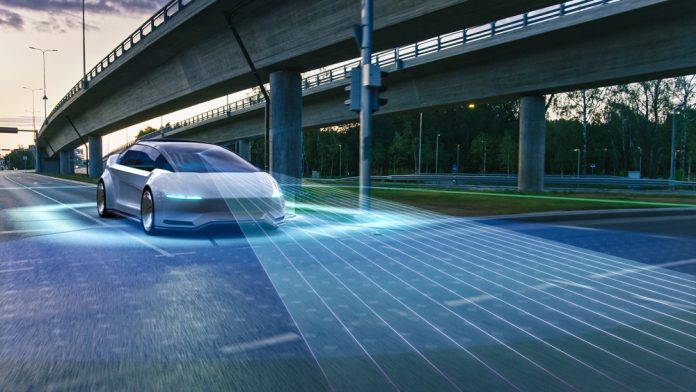Three leading UK organisations are combining forces to improve the safety of self-driving vehicles.
Calyo, Benedex Robotics and Cranfield University are collaborating to pioneer a functional safety sensing platform for self-driving vehicles based on 3D ultrasound.
The initiative is part of Calyo’s DRIVEN BY SOUND project and aims to enable autonomous vehicles to work effectively in the most challenging environments.
Mihai Caleap, CEO of Calyo, explained: “Our partnership is delivering a robust, redundant sensing platform based on 3D ultrasound for automotive Advanced Driver Assistance Systems (ADAS) and autonomous driving.
“The technology will be applicable across vehicle platforms, including off-road industrial applications.”
Improving the safety of autonomous vehicles with sound
The collaboration merges Calyo’s 3D ultrasound sensor (Calyo Pulse™), Benedex’s safety platform expertise, and Cranfield University’s autonomous vehicle integration and testing experience.
This new technology enables real-time 3D detection of surroundings, enhancing existing sensing systems and providing an extra layer of safety.
It acts as a critical redundancy mechanism, allowing vehicles to execute minimum risk manoeuvres (MRMs) and safely stop during faults or severe road conditions.
Snir Benedek, CEO of Benedex Robotics, added: “By integrating this additional layer of functional safety, we are introducing innovation, which is transformative in the industry while cost-effective and easy to implement, establishing the foundation for accessible, safe and secure autonomous mobility.”
Development schedule
The revolutionary technology will be available to Tier 1 companies, automotive manufacturers, and start-up mobility ventures.
The project is scheduled to be completed in early 2025, with the demonstration of a prototype vehicle at at Cranfield University’s Multi User Environment for Autonomous Vehicle Innovation (MUEAVI) proving ground.
Marco Cecotti, Lecturer in Driving Automation at Cranfield University, believes the project will be instrumental in accelerating the adoption of autonomous vehicles.
He said: “Safety has to be at the top of the agenda for autonomous vehicle development, and this exciting project will provide a robust solution to deal with extreme environmental conditions, one of the biggest technical challenges to the widespread availability of self-driving vehicles.”









